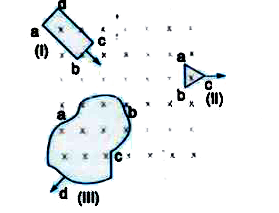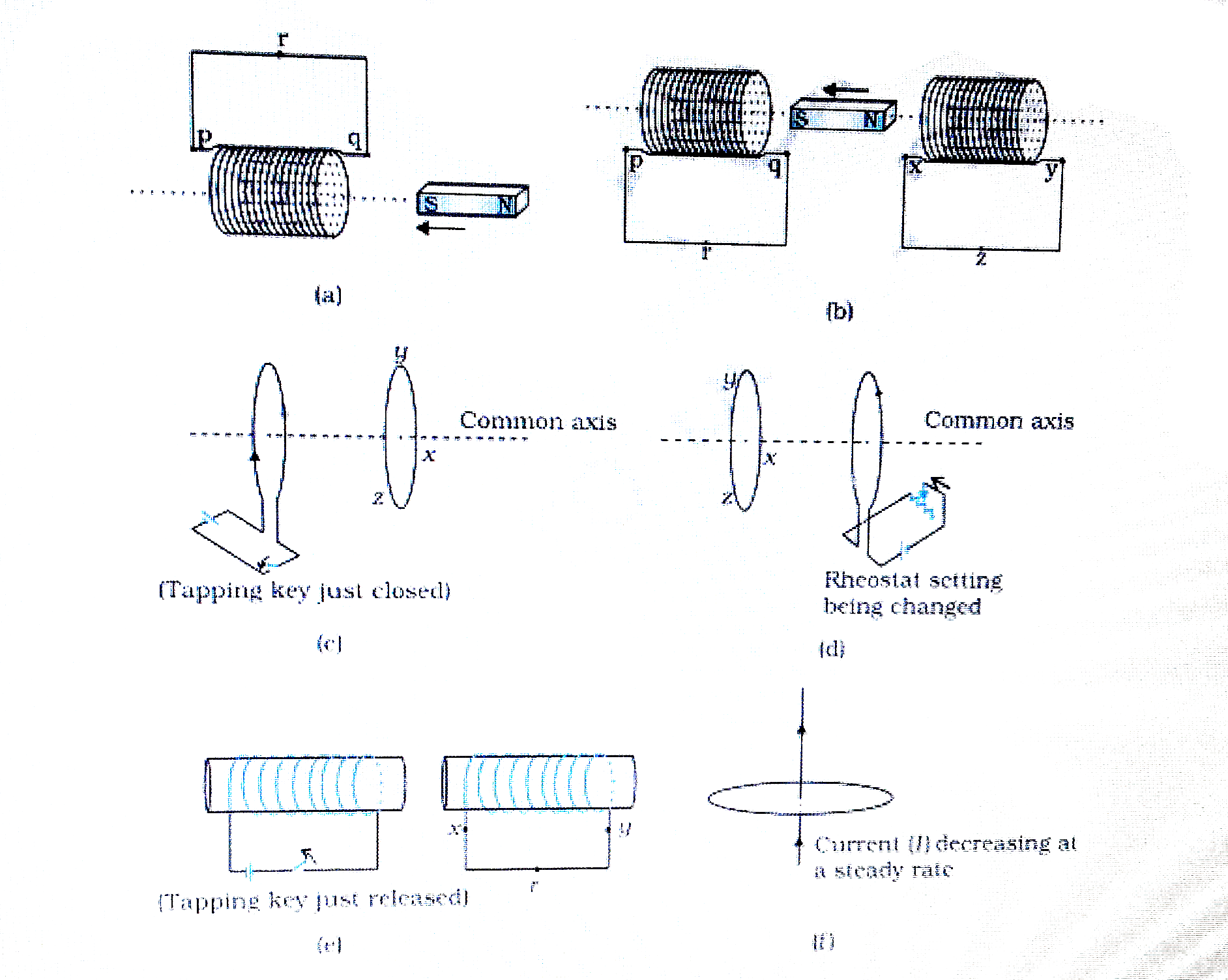Asseration: The direction of induced e.m.f. is always such as to oppose the change that causes it.
Reason: The direction of induced e.m.f. is given by Lenz's Law.
The correct Answer is:a
To solve the assertion-reason question, we need to analyze both the assertion and the reason provided.
1. Understanding the Assertion:
- The assertion states that "The direction of induced e.m.f. is always such as to oppose the change that causes it." This is a statement of Lenz's Law, which is a fundamental principle in electromagnetism. According to Lenz's Law, the induced electromotive force (e.m.f.) will always act in a direction to oppose the change in magnetic flux that produced it.
- Conclusion: The assertion is correct.
2. Understanding the Reason:
- The reason states that "The direction of induced e.m.f. is given by Lenz's Law." This is also true. Lenz's Law provides the rule for determining the direction of the induced e.m.f. based on the change in magnetic flux.
- Conclusion: The reason is also correct.
3. Combining the Assertion and Reason:
- Since both the assertion and the reason are correct, we need to determine if the reason correctly explains the assertion. In this case, the reason does explain the assertion because Lenz's Law directly relates to the direction of the induced e.m.f. opposing the change in magnetic flux.
- Final Conclusion: Both the assertion and reason are correct, and the reason correctly explains the assertion.
Final Answer:
Both the assertion and reason are correct, and the reason correctly explains the assertion.
---
- The assertion states that "The direction of induced e.m.f. is always such as to oppose the change that causes it." This is a statement of Lenz's Law, which is a fundamental principle in electromagnetism. According to Lenz's Law, the induced electromotive force (e.m.f.) will always act in a direction to oppose the change in magnetic flux that produced it.
- Conclusion: The assertion is correct.
- The reason states that "The direction of induced e.m.f. is given by Lenz's Law." This is also true. Lenz's Law provides the rule for determining the direction of the induced e.m.f. based on the change in magnetic flux.
- Conclusion: The reason is also correct.
- Since both the assertion and the reason are correct, we need to determine if the reason correctly explains the assertion. In this case, the reason does explain the assertion because Lenz's Law directly relates to the direction of the induced e.m.f. opposing the change in magnetic flux.
- Final Conclusion: Both the assertion and reason are correct, and the reason correctly explains the assertion.
Both the assertion and reason are correct, and the reason correctly explains the assertion.
Topper's Solved these Questions
- BOOK - NCERT FINGERTPS ENGLISHCHAPTER - ELECTROMAGNETIC INDUCTIONEXERCISE - The Experiments Of Faraday And Henry2videos
ELECTROMAGNETIC INDUCTION
- BOOK - NCERT FINGERTPS ENGLISHCHAPTER - ELECTROMAGNETIC INDUCTIONEXERCISE - Magnetic Flux3videos
ELECTROMAGNETIC INDUCTION
- BOOK - NCERT FINGERTPS ENGLISHCHAPTER - ELECTROMAGNETIC INDUCTIONEXERCISE - EXEMPLAR PROBLEMS3videos
ELECTROMAGNETIC INDUCTION
- BOOK - NCERT FINGERTPS ENGLISHCHAPTER - ELECTRIC CHARGES AND FIELDSEXERCISE - Assertion And Reason15videos
ELECTRIC CHARGES AND FIELDS
- BOOK - NCERT FINGERTPS ENGLISHCHAPTER - ELECTROMAGNETIC WAVESEXERCISE - Assertion And Reason15videos
ELECTROMAGNETIC WAVES
Similar Questions
The direction of induced e.m.f. during electromagnetic induction is given by
View SolutionThe induced e.m.f. in a coil does not depend on
View SolutionWhat is the basic cause of induced emf?
View SolutionAsseration: Induced potential across a coil and therefore induced current is always opposite to the direction of current due to external source.
Reason: Lenz's law states that it always opposes the cause due to which it is being produced.View SolutionA: The induced current flows so as to oppose the cause producing it.
R: Lenz's law is based on energy conservation.View SolutionE.M.F has dimensions of
View SolutionName two factors on which the magnitude of an induced e.m.f. in the secondary coil depends.
View SolutionFigure shows planar loops of different shapes moving out of or into a region of a magnetic field which is directed normal to the plane of the loop away from the reader. Determine the direction of induced current in each loop using Lenz's law.
 View Solution
View SolutionPredict the direction of induced current in the situations described by the following Figs. 6.18(a) to (f).
 View Solution
View SolutionElectromagnetic brakes work on the principle of electromagnetic induction. If a metallic disc or a coil is rotating in a uniform magnetic field, it will experience a torque due to induced currents set up in the disc. According to Lenz's law, induced current is in a direction so as to oppose the rotation. Hence a retarding torque is produced. The rotating wheel of a vehicle is connected to a coil placed in a uniform emf is used to charge a battery. Thus kinetic enery of wheel is stored as chemical energy. The drawback of electromagnetic brake is that induced current or retarding torque is directly proportional to speed of rotation. The speed, therefore, decays exponentially and vehicle will take a long time to stop. Thus, mechanical brakes are used simultaneously.
The working of electromagnetic brakes does not involveView Solution

